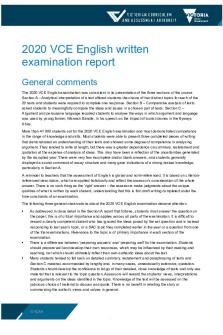Lab report (Metallographic specimen preparation and examination) PDF

| Title | Lab report (Metallographic specimen preparation and examination) |
|---|---|
| Author | mahamed bulshawi |
| Course | Principles of Materials Science and Engineering |
| Institution | جامعة الإسكندرية |
| Pages | 8 |
| File Size | 471.4 KB |
| File Type | |
| Total Downloads | 102 |
| Total Views | 131 |
Summary
Download Lab report (Metallographic specimen preparation and examination) PDF
Description
Metalluregy lab (report (3
Name:
Mohamed Abdurrahman Mohamed
ID: 3371 Report of metallographic SAMPLE PREPARATION FOR MICROSCOPY
Metallographic specimen preparation and examination :Objectives
The objective of this experiment is to describe metallographic and its application to study the microstructure of materials and to provide experience of metallographic preparation techniques together with practical examples of fracture analysis and Quantitative meta1lography . Students will observe grain boundaries and phases in different metallic samples using an optical microscope.
:Safety Optical metallography involves the use of etchants (standard solutions containing a variety of chemicals such as strong acids and solvents) which can be very corrosive and poisonous. You must wear gloves and goggles and handle the chemicals with extreme care. You must not have direct skin or eye contact with the etchants. Etchants .must be used in well ventilated area. Do not try to smell the etchants
:Introduction Def: Metallographic is the study of the physical structure and components of metals,
typically using microscopy. And Our understanding of the behavior of materials depends on our ability to relate properties to microstructures. The microstructure is the geometric arrangement of grains and the different phases present in a material. Materials engineers can predict the general behavior of materials by observing their microstructure. Besides the crystallographic nature of a material, imperfections inside a material have an even greater influence on the mechanical properties, i.e. tensile, fatigue, creep, fracture toughness, impact properties. Some defects such as missing planes of atoms, called dislocations, are responsible for plastic deformation of crystalline solids. Others such as grain boundaries, precipitates, twins and cracks alter stress distribution in a material and the accompanying motion of dislocations. Some defects such as missing atoms and dislocations cannot be observed optically except by their effects, i.e. strain, etch pits, slip lines. Other defects such as grain boundaries, twins, precipitates, can be observed readily in the microscope.
:Microscope examination
Prepared specimens should be examined with the unaided eye after etching to detect any visible areas that have responded to the etchant differently from the norm as a guide to where microscopical examination should be employed. Light optical microscopy (LOM) examination should always be performed prior to any electron metallographic (EM) technique, as these are more time-consuming to perform and the instruments are much more expensive. Further, certain features can be best observed with the LOM, e.g., the natural color of a constituent can be seen with the LOM but not with EM systems. Also, image contrast of microstructures at relatively low magnifications, e.g.,...
Similar Free PDFs

Preparation of Soap-Lab Report
- 12 Pages

Grossing and Specimen Receiving
- 1 Pages

Preparation Of Esters Lab
- 7 Pages

2020 VCE English examination report
- 10 Pages

2020 VCE Biology examination report
- 14 Pages
Popular Institutions
- Tinajero National High School - Annex
- Politeknik Caltex Riau
- Yokohama City University
- SGT University
- University of Al-Qadisiyah
- Divine Word College of Vigan
- Techniek College Rotterdam
- Universidade de Santiago
- Universiti Teknologi MARA Cawangan Johor Kampus Pasir Gudang
- Poltekkes Kemenkes Yogyakarta
- Baguio City National High School
- Colegio san marcos
- preparatoria uno
- Centro de Bachillerato Tecnológico Industrial y de Servicios No. 107
- Dalian Maritime University
- Quang Trung Secondary School
- Colegio Tecnológico en Informática
- Corporación Regional de Educación Superior
- Grupo CEDVA
- Dar Al Uloom University
- Centro de Estudios Preuniversitarios de la Universidad Nacional de Ingeniería
- 上智大学
- Aakash International School, Nuna Majara
- San Felipe Neri Catholic School
- Kang Chiao International School - New Taipei City
- Misamis Occidental National High School
- Institución Educativa Escuela Normal Juan Ladrilleros
- Kolehiyo ng Pantukan
- Batanes State College
- Instituto Continental
- Sekolah Menengah Kejuruan Kesehatan Kaltara (Tarakan)
- Colegio de La Inmaculada Concepcion - Cebu










